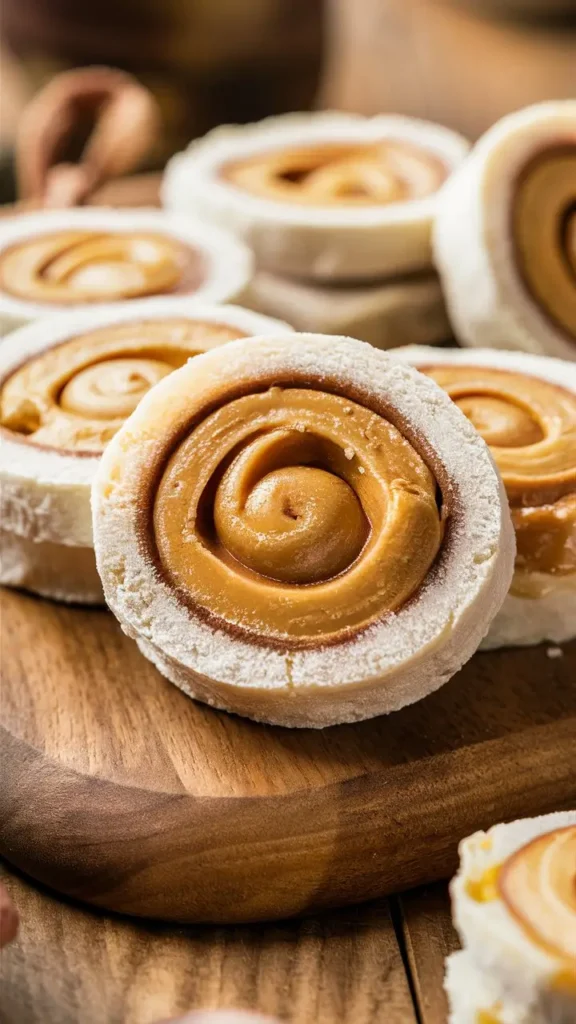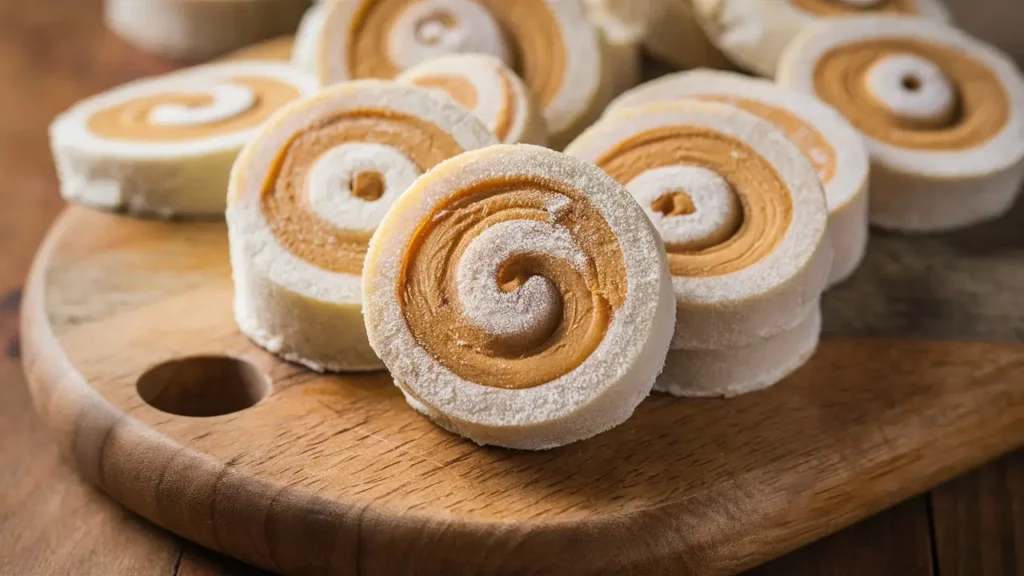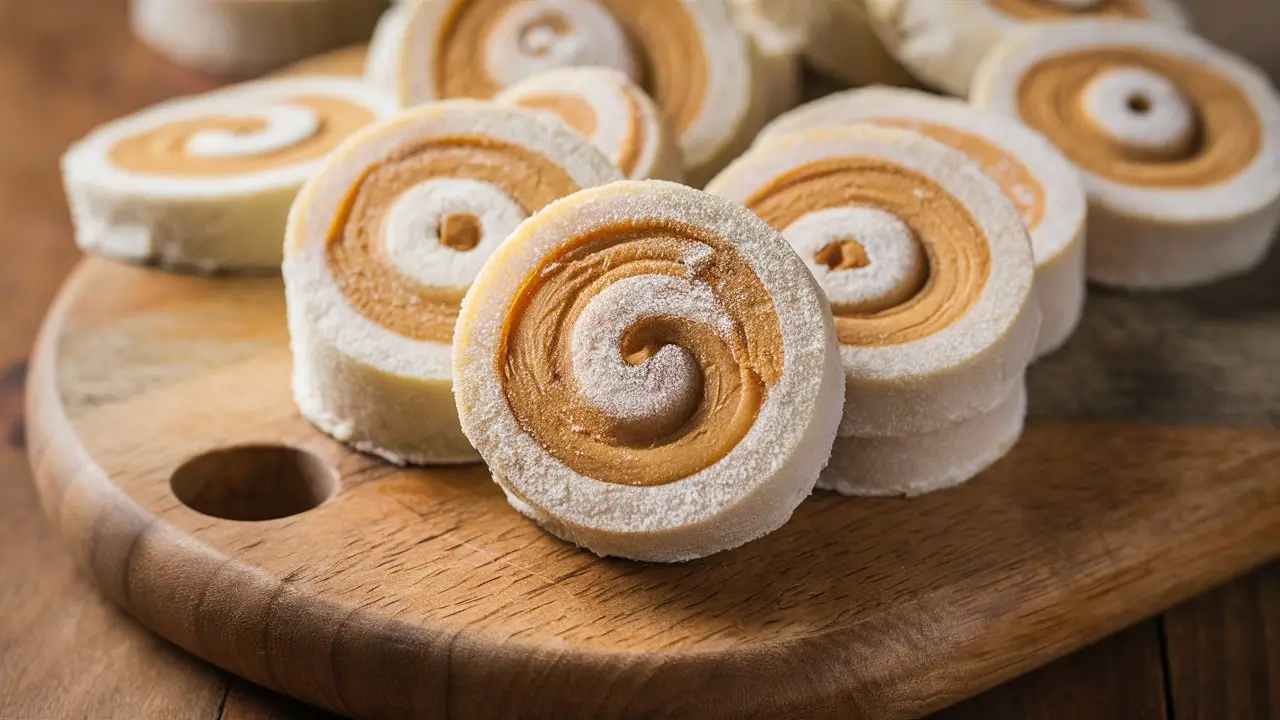Potato candy may sound surprising at first, but this old-fashioned treat has delighted generations with its creamy texture and sweet, peanut butter-filled swirl. Made from just a few pantry staples—including mashed potatoes, powdered sugar, and peanut butter—this no-bake candy is perfect for holidays, gifting, or satisfying your sweet tooth with something unique and nostalgic.
Whether you grew up with this recipe or are discovering it for the first time, potato candy offers a fun way to turn humble ingredients into a magical dessert.

Why You Will Love This Recipe
-
No-Bake Simplicity: No need for candy thermometers or ovens.
-
Only a Few Ingredients: Uses pantry staples you probably already have.
-
Perfect for Gifting: Slices beautifully and keeps well.
-
Customizable Flavors: Great base for experimenting with fillings and mix-ins.
-
Nostalgic Appeal: A taste of Americana and grandma’s kitchen.
What Is Potato Candy?
Potato candy is a vintage dessert recipe that originated during the Great Depression, when ingredients like sugar and potatoes were cheap and easy to come by. Despite its name, this candy doesn’t taste like potatoes—the mashed potato acts as a moisture base and binder for the confectioner’s sugar, resulting in a pliable dough that’s surprisingly sweet.
The traditional filling is peanut butter, which is spread over the rolled-out dough and then rolled up, chilled, and sliced into pinwheel shapes. It’s sweet, rich, and satisfying—perfect in small doses.
Ingredients List
Here’s everything you need to make traditional potato candy:
For the Dough:
-
1 small Russet potato, peeled and boiled (about ½ cup mashed)
-
4–6 cups powdered sugar (sifted)
-
1 teaspoon vanilla extract (optional)
-
Pinch of salt (optional)
For the Filling:
-
½ to ¾ cup creamy peanut butter
You can also try almond butter, hazelnut spread, or chocolate spread for variations.
Timing & Servings
-
Prep Time: 30 minutes
-
Chill Time: 1 hour
-
Total Time: 1 hour 30 minutes
-
Servings: Makes about 20–24 slices
Step-by-Step Instructions for Potato Candy
Step 1: Boil and Mash the Potato
Peel and boil the potato until fork-tender. Drain and mash it until smooth—no lumps. You’ll need about ½ cup mashed potato.
Step 2: Mix with Powdered Sugar
In a large mixing bowl, begin stirring in powdered sugar one cup at a time into the mashed potato. It will look odd at first, but keep mixing until you get a stiff, dough-like consistency.
You may need 4 to 6 cups of powdered sugar depending on the moisture content of the potato.
Step 3: Roll Out the Dough
Dust a clean surface with powdered sugar and roll out the dough into a rectangle, about ¼ inch thick. Keep it even and not too thin to avoid tearing.
Step 4: Spread the Peanut Butter
Carefully spread an even layer of peanut butter across the dough, leaving a small border along the edges to prevent overflow when rolling.
Step 5: Roll and Chill
Starting at one end, gently roll the dough into a log shape, just like a jelly roll or cinnamon roll. Wrap it tightly in plastic wrap and refrigerate for at least 1 hour or until firm.
Step 6: Slice and Serve
Unwrap and slice the candy into ½-inch pinwheels. Serve immediately or store in an airtight container.

Best Potato for Potato Candy
The type of potato matters more than you’d think:
-
Russet potatoes: High starch, low moisture. Ideal for candy making.
-
Yukon Gold: Acceptable but slightly more moisture—may require more sugar.
-
Avoid red or waxy potatoes: Too much moisture leads to sticky, unworkable dough.
Always mash potatoes thoroughly and cool slightly before mixing with sugar.
History and Origins of Potato Candy
Potato candy likely originated in the Appalachian region of the United States, with roots in Irish-American communities. During tough economic times, people got creative with what they had—sugar, potatoes, and peanut butter were affordable, and refrigeration was becoming more common.
It’s been a staple in Southern and Midwestern homes for generations, particularly around the holidays like Christmas and Easter, when families would make candy in big batches to share or gift.
Flavor Variations to Try
While the traditional version uses peanut butter, here are some exciting twists:
Chocolate Swirl:
-
Use Nutella or chocolate spread instead of peanut butter.
Cinnamon Sugar:
-
Sprinkle cinnamon and sugar before rolling for a warm, spiced candy.
Coconut & Almond:
-
Add a layer of sweetened shredded coconut and drizzle with almond extract.
Maple Pecan:
-
Use maple syrup-flavored peanut butter and chopped pecans for a fall version.
Mint Chocolate:
-
Add peppermint extract to the dough and use chocolate spread.
Tips for Success
-
Start with a small potato: Too much potato means you’ll need a lot of sugar to firm up the dough.
-
Cool the potato slightly before mixing—hot potato can melt the sugar too quickly.
-
Don’t overwork the dough: Mix just until firm; overmixing can make it sticky.
-
Dust with powdered sugar while rolling to avoid sticking.
-
Chill before slicing: Cold dough holds its shape much better for neat pinwheels.
How to Store Potato Candy
Potato candy is best stored in the refrigerator:
-
Refrigerator: Store in an airtight container for up to 2 weeks.
-
Freezer: Can be frozen for up to 2 months. Wrap the log tightly, then thaw in the fridge and slice when ready.
Let slices sit at room temperature for a few minutes before serving for the best texture.
Serving Suggestions
Potato candy is sweet and rich, so serve it in small slices:
-
As part of a holiday candy tray
-
Paired with coffee or tea
-
Packaged in boxes for homemade gifts
-
Served as a nostalgic dessert at potlucks or parties
Dust slices lightly with extra powdered sugar or drizzle with melted chocolate for presentation.
Potato Candy for Special Diets
Gluten-Free:
Yes! All ingredients are naturally gluten-free. Just confirm labels on peanut butter.
Dairy-Free:
Yes, as long as you use dairy-free margarine or no butter at all. The base recipe doesn’t need dairy.
Vegan:
Yes, it can be made completely vegan. Just use a plant-based filling like almond butter or tahini.
FAQs
Does it taste like potato?
Not at all! The sugar completely masks the flavor of the potato. It simply provides structure.
Can I make this with leftover mashed potatoes?
Only if they were made plain—no butter, cream, or salt. Seasoned potatoes will affect the taste and texture.
Why is my dough sticky?
You may have used a potato with too much moisture or not added enough sugar. Keep adding powdered sugar until it’s firm but pliable.
How long does it last?
Stored in the fridge, it lasts up to 2 weeks. In the freezer, it can last 2 months.
Can I skip the peanut butter?
Yes! You can leave it plain, use jam, Nutella, or even chocolate ganache for a fun spin.
Potato Candy vs. Other No-Bake Treats
Candy Type Main Ingredients Texture Best For Potato Candy Potato, sugar, peanut butter Creamy, sweet Holiday platters, gifting Fudge Sugar, butter, chocolate Firm, rich Holidays, chocolate lovers Buckeyes Peanut butter, chocolate Dense, chewy Crowd-pleasing sweet bites Date Balls Dates, coconut, nuts Soft, chewy Healthier treat option
Potato candy is among the easiest and most affordable candy recipes with an irresistible, melt-in-your-mouth texture.
Conclusion
Potato candy is a delightful and unexpected dessert that proves you don’t need fancy ingredients to make something special. It’s the kind of recipe that’s passed down through generations—part sweet, part story—and a wonderful way to connect with culinary traditions from the past.
Whether you’re making it for holiday gifts, a fun kitchen experiment, or a taste of something old-fashioned, potato candy offers both charm and flavor. With its creamy, peanut-buttery swirl and quick preparation, this treat is guaranteed to become a beloved classic in your home too.
